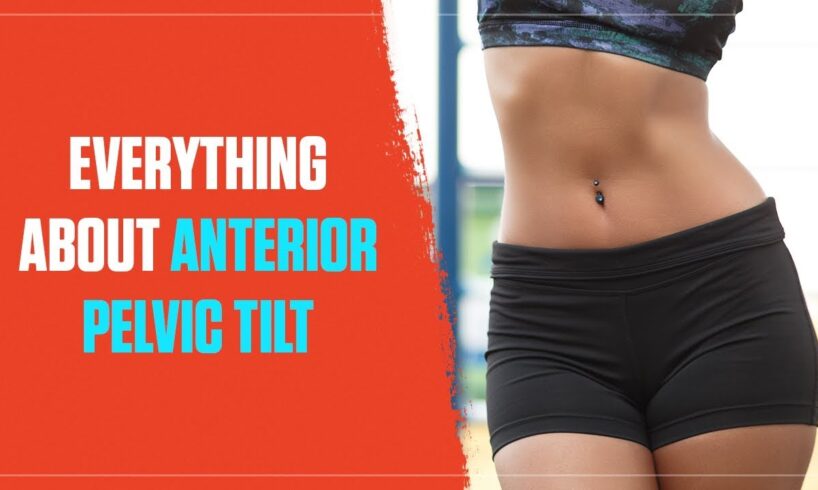
Did you know that up to 80% of the population suffer from an anterior pelvic tilt, and that most of these people do not show any symptoms?
This article will go through what anterior pelvic tilt is, how it is caused, and how to fix anterior pelvic tilt in adults.
What is an Anterior Pelvic Tilt?
The pelvic girdle is made up of a number of bones including the sacrum, coccyx, ilium, ischium, and pubis. It functions to support the internal organs, and provides stabilisation to the body. It’s also essential to help transfer weight from the upper body to the lower body.
Anterior pelvic tilt is a change in posture that results when the front of the pelvis rotates forwards, causing the back of the pelvis to rise. It can also cause changes to your stability, mobility, and motor control because it can disrupt the kinetic chain.
What Causes an Anterior Pelvic Tilt?
The primary cause of anterior pelvic tilt is shortening of the hip flexors, and lengthening of the hip extensors. These are the muscles that surround the hip. Your hip flexors sit at the top of the thigh and enable you to walk, kick, bend, and rotate your hips. On the posterior side of the body are the hip extensors, such as the gluteal muscles and hamstrings, that help to open up the hip joint.
Ideally, the spine should remain neutral and well-aligned, so it forms an almost straight line with a small amount of natural curvature from your neck all the way down to your hips. When the hip flexors are tight (shortened), and the hip extensors are more relaxed (lengthened), the pelvis is pulled into a tilted position. This increases curvature of the lower spine and upper back, leading to poor posture and possibly lower back pain. Tight muscles around the hips are caused by poor posture, lack of stretching and, excessive sitting
An anterior pelvic tilt can also be caused by excessive weight around the stomach, including excess fat tissue or pregnancy weight.

How to Fix an Anterior Pelvic Tilt?
Luckily, anterior pelvic tilts are not always permanent. This issue is often that people do not associated their lower back pain with anterior pelvic tilt, but performing some of these simple activities and exercises below may reduce or completely remove the pain that you’re experiencing.
Programmes to fix anterior or posterior pelvic tilt work on strengthening and stretching out the muscles that surround the hips, back, and core. It is recommended to consult a personal trainer or a physiotherapist before starting a training programme.
- Yoga
Yoga has some amazing health benefits, and it can be a perfect way to help fix an anterior pelvic tilt. It helps to strengthen the core and lower body muscles, which will stabilise the pelvis. Yoga is also great to stretch out tight muscles, and can be used to loosen the hip flexors.
2. Lying Glute Bridges
Lying glute bridges involve lying flat on your back, and lifting your hips up into the air. This movement strengthens the gluteal muscles and hamstrings, which helps to pull the pelvis to a more neutral position.
3. Planks
Planks are another strength exercise that work the anterior muscles in the core. Keeping a strong core will keep your pelvis stable and in a more neutral position.
4. Foam Rolling
Foam rolling provides a form of myofascial release that can relieve tension in muscles. In particular, foam rolling the glutes and quadriceps will help to fix anterior pelvic tilt by reducing the tightness in these muscles that support the pelvic girdle.
5. Rear Leg Raises
Rear leg raises require you to kneel on the floor on all fours, and alternatively lift each leg up behind you. This exercise requires the posterior muscles (glutes and hamstrings) to work hard to lift the leg off the floor, thereby strengthening them, which is key to fixing an anterior pelvic tilt.
6. Dead Bugs
Dead bugs are a core exercise where you lie flat on the floor with your arms and knees bent up at 90-degree angles. You then straighten one arm and the opposite leg before returning them back to the starting position. This movement repeats on both sides, with the aim to strengthen the core muscles. Having a strong, engaged core is key to keeping the pelvis in a neutral position.








